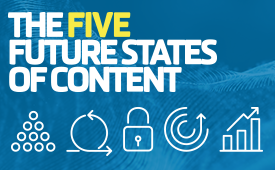By Dr Kevin Ashbridge, VP Global Travel, Leisure & Hospitality Solutions, SDL
There is great interest in the travel industry around artificial intelligence (AI) and in understanding how it can enhance the experience of the connected traveller. At the top of the list is delivering a personally relevant marketing experience to the traveller wherever they are. It’s here that AI is making a big splash. Artificial Intelligence – coupled with ‘Big Data’ analytics – can profile an individual’s preferences and tastes to recommend the best-fit products and services.
However, while AI is currently involved in tailoring the high-level digital experience, there is very little work being done on the actual content delivered to the traveller. If someone selects a product, such as a hotel, the description of the property delivered is the same one that everyone else gets. Email marketing and landing page text are often equally generic one-size-fits-all affairs. Blog posts about travel experiences do not reorganise their textual presentation depending on who is reading the blog and what they are hoping to find there.
The reasons why textual content seems to have been left out of this “personally relevant” revolution is very much down to the traditional processes behind its creation. It is created, translated and stored for delivery using a waterfall methodology, where one step is followed by the next. And it’s nearly always a manual, human-led process.
At SDL, we believe the next great revolution in the personally relevant marketing experience is in the application of AI to the content process. Indeed, we have made five predictions about the future of content and how it will re-energise the conversation between your travel business and the connected traveller.
An AI-Driven Content Model
Our first prediction is that content will create itself. Yes, that’s right; an intelligent machine will take on a role that has traditionally been a human endeavour. Using a branch of AI called “machine learning”, computers will soon be able to build multiple variations of existing content automatically. Imagine a hotel description that is created especially for an individual based on what they like to enjoy at a particular hotel. No ‘one-size-fits-all’ description here.
Second, content will be agile. Content robots will react to inputs from the traveller or the marketer to create, translate and deliver these variations in real-time. It’s here that the “waterfall” methodology of content creation breaks down. There are no longer discrete create, translate and delivery steps separated by the days or weeks each step takes to do in the traditional content publishing process. Instead AI will create in an agile manner, content that is both immediately relevant to the traveller, set in their own language, and suitable for the traveller’s device.
Third, content will organise itself; generating taxonomies within existing long-form content to be better searched and delivered dynamically. This does not mean the death of blog posts, destination guides or similar long-form content. Far from it. Instead, such content becomes ‘smarter’ thanks to AI. It means that, one day, a blog presentation could become dynamic and reactive to the traveller’s or marketer’s wishes or location and surfacing the most relevant passages in the output presentation for the end consumer. It’s kind of like those video games that allow you to make choices about where the gameplay will head next while you are enjoying the game. This is particularly exciting for the travel industry that has so many options on offer. Itineraries and attraction descriptions could soon construct themselves, even while the tourist is visiting them, depending on what that individual is interested in experiencing.
Fourth, content will be automatically secure. This is a big consideration in the digital world where personal data is always at risk. AI will in the future develop an understanding of which data is sensitive and apply policies for security in all aspects of the content chain. There should be less chance of sensitive data being exposed in the wrong context.
Our final prediction is that AI-driven content will be your best salesperson. It will use all of the above principles to develop a conversation with every customer, individually. The content of that conversation will be created, translated and delivered securely, in real-time, as a contextually relevant presentation for an ‘audience of one’.
The Future is Now
Truth be told, almost everything that we’ve predicted here is based on technology that is already available. The Artificial Intelligence technologies of Natural Language Understanding, Natural Language Processing, Natural Language Generation and Machine Translation have been around for many years and are in use daily within many enterprise applications. What SDL is both proposing here – and developing for market – is the specific application of these component technologies for textual content.
To be part of the inevitable revolution that we’ve described requires that your business be ready to experiment with and embrace the role of the machine in the content chain. The biggest travel companies are already well along on this digitalisation journey. You will need to decide if and how your business will be interacting with tomorrow’s connected traveller.
To learn more about the Five Future States of Content, visit: www.sdl.com/travelforward.



